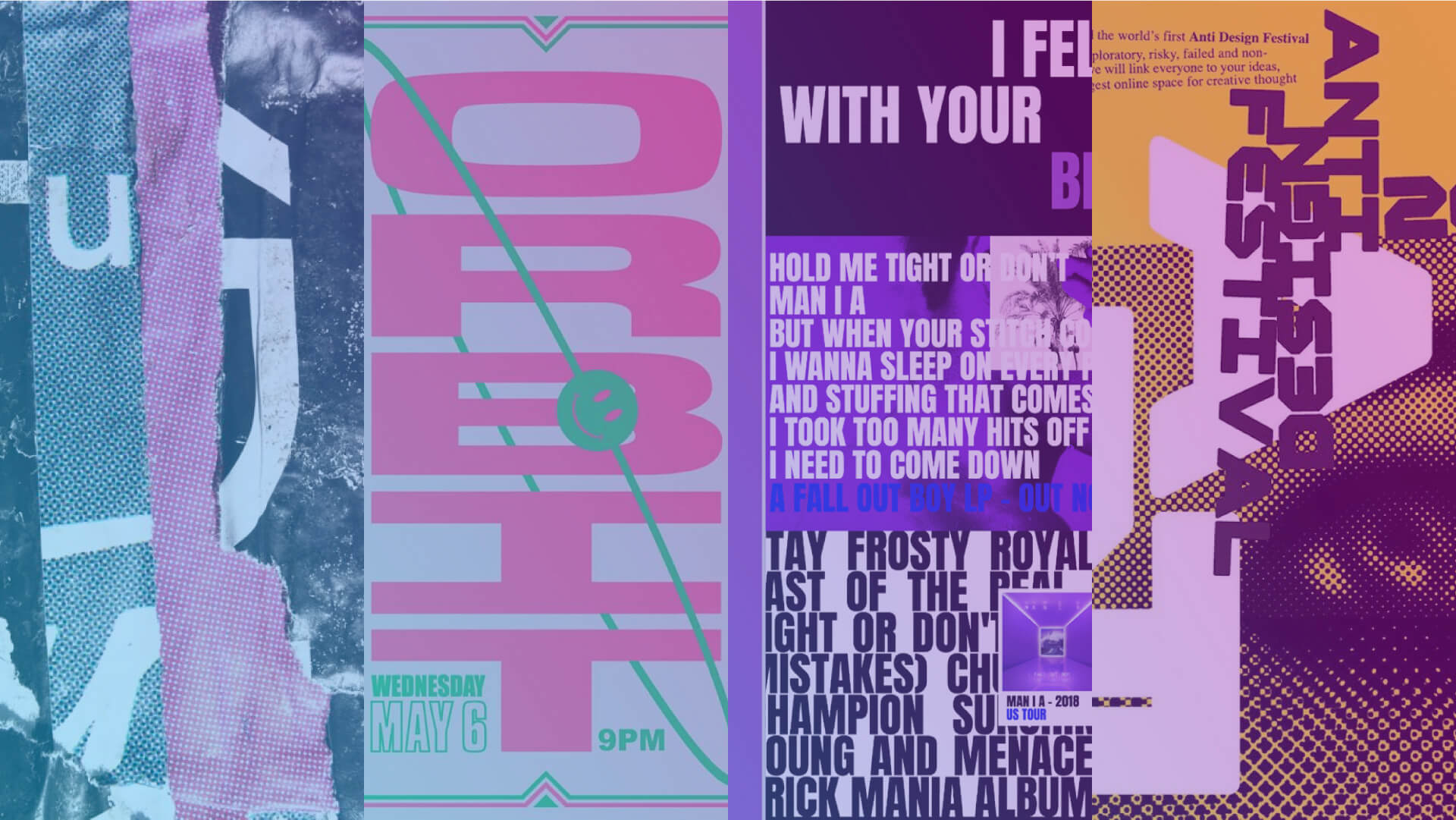
1990s Design Revival
August 18, 2021 - Solution

August 18, 2021 - Solution
Almost everyone has probably heard some version of this adage. It’s something I first remember hearing as a teenager, thinking “Yeah right. Why would bell-bottoms ever come back?” But as the design, layouts, palettes, and aesthetics of the 1990s are in full revival now, the phrase continues to ring more true with each generation.
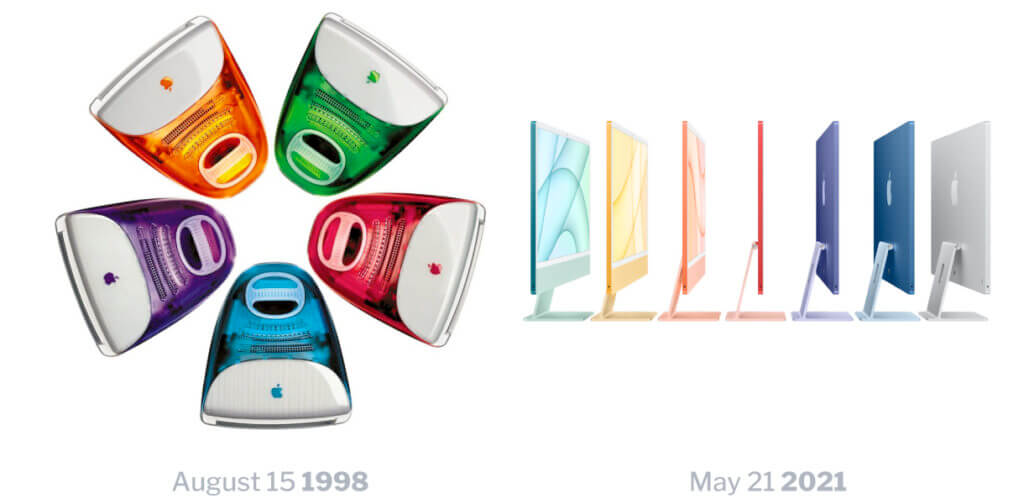
Even Apple can’t resist the pull towards two decades prior, announcing a new line of iMacs in fresh pastel colors. Though not quite as vibrant as their hardware in the 90s (and missing that awesome transparent plastic), these colors do evoke a different feel than the variety of metal finishes Apple has offered for their devices for the past decade.
It seems the 90s is upon us again so let’s take a look at some of the defining design trends from the decade, trace their origins, and learn about the driving factors behind these trends.
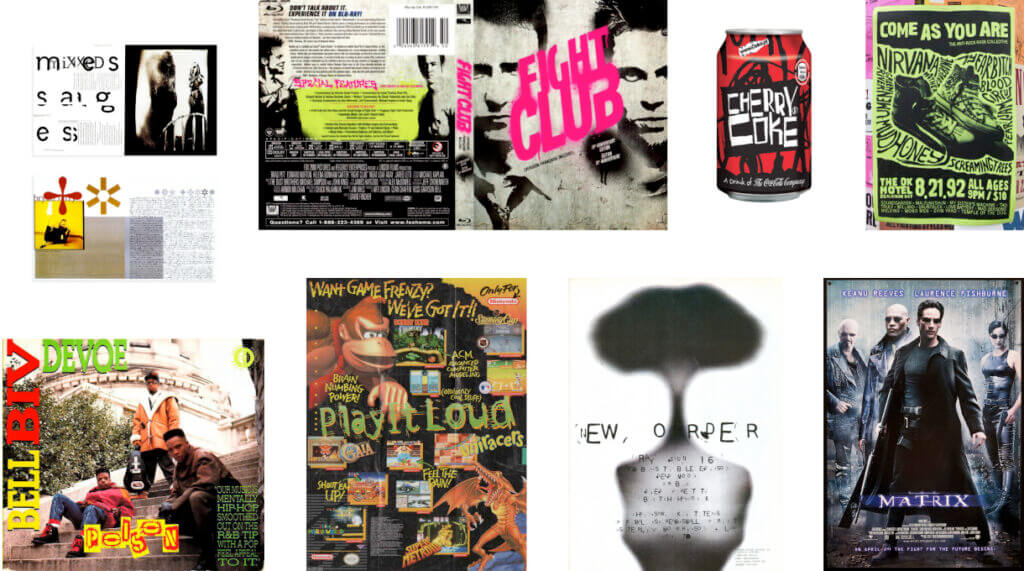
“Never mistake legibility for communication”
David Carson, Ray Gun Magazine
Carson’s sentiment implies that even though something may be clearly legible and understood, it doesn’t necessarily mean that the proper meaning or tone was conveyed. Born out of angst and 90s counterculture, grunge follows a lineage and pulls inspiration from graffiti and the punk music scene while embodying that same chaos and unrest in their visual design. Rough edges, tattered textures, and misaligned type all converged to make the distinct and chaotic style of grunge that continues to see innovative applications today.
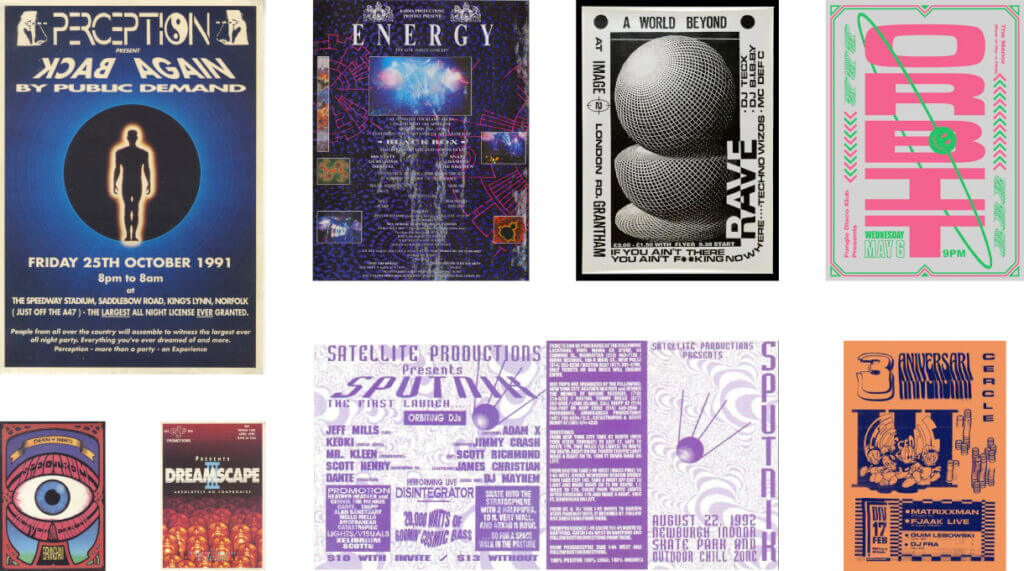
Styles of music including Acid House and Trance with origins in the 1980s began to define a look all their own in the 1990s. Gatherings for these musical events began to go by the more illicit name “raves.”
While not the full-blown descent into debauchery that the nightly news of the time made them out to be, patrons of raves would occasionally be under the influence of drugs and alcohol. Combine this with dark environments featuring strobing lights and you’ll quickly realize legibility was at a premium.
As a result, designs featuring bold, high contrast typography mixed with psychedelic figures and geometry are at the forefront of this design trend. Present-day, these trippy visuals are now often combined with motion graphics to create even more captivating and immersive designs for digital album art, live performances, and music videos.
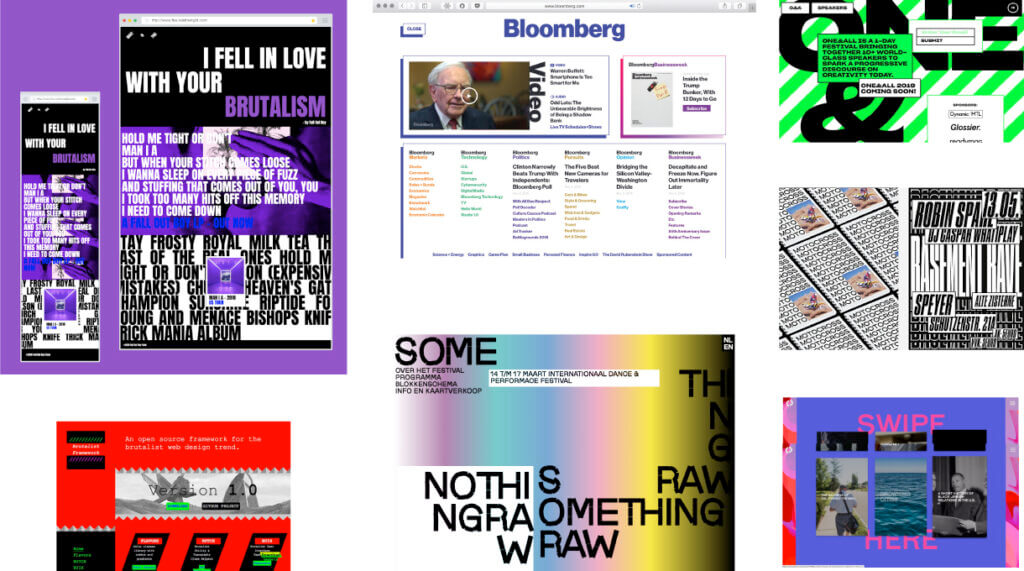
While the Brutalism aesthetic wasn’t actively or intentionally created in the 1990s, it was a product of the technical limitations of the time. Today’s designers are very intentionally curbing from these designs of decades past.
Borrowing its name from the minimalist, barebones architectural style, Brutalism in the design world gains its look by employing only the most rudimentary of technological advancements in order to reflect back upon a time when design, specifically in the web and digital world, was much more limited. Effects that mimic basic HTML formatting techniques, text effects generated by program defaults (think Microsoft WordArt), and retro operating system elements are meant to give a raw and barebones appearance.
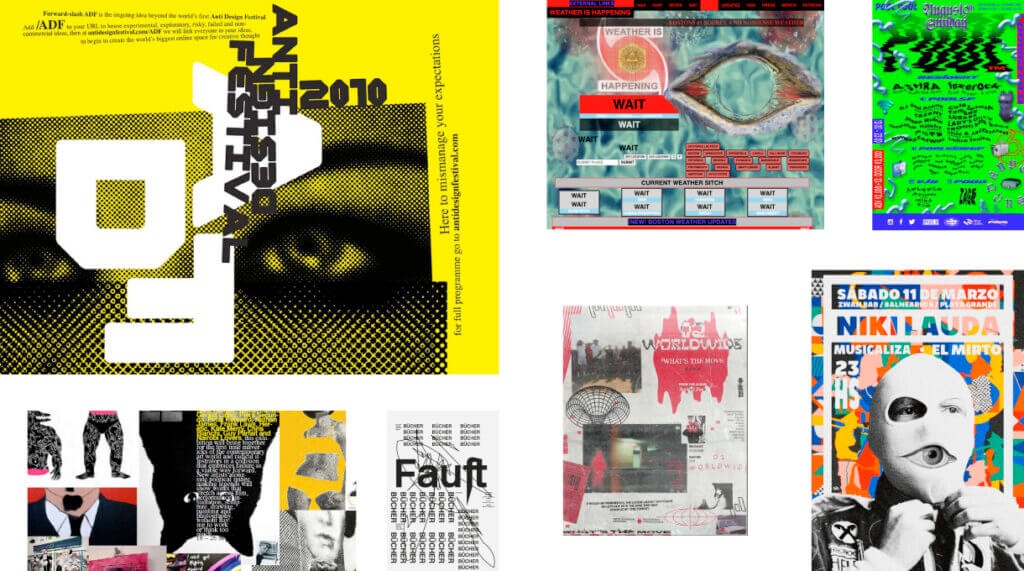
Pushing Brutalist design even further, some artists (Anti-Artists?) have paved the way for what’s now called Anti-Design. This aesthetic seeks to actively create ugly and confounding designs utilizing a mishmash of nearly all of the previously mentioned trends. These designs are loud and grabbing, forcing their audience to pay attention by bucking expectations for how layout, design, and user interface elements can look and function.
So now that we understand the basics of some of the popular 1990s design trend revivals, why exactly did those designs take formation in the first place?
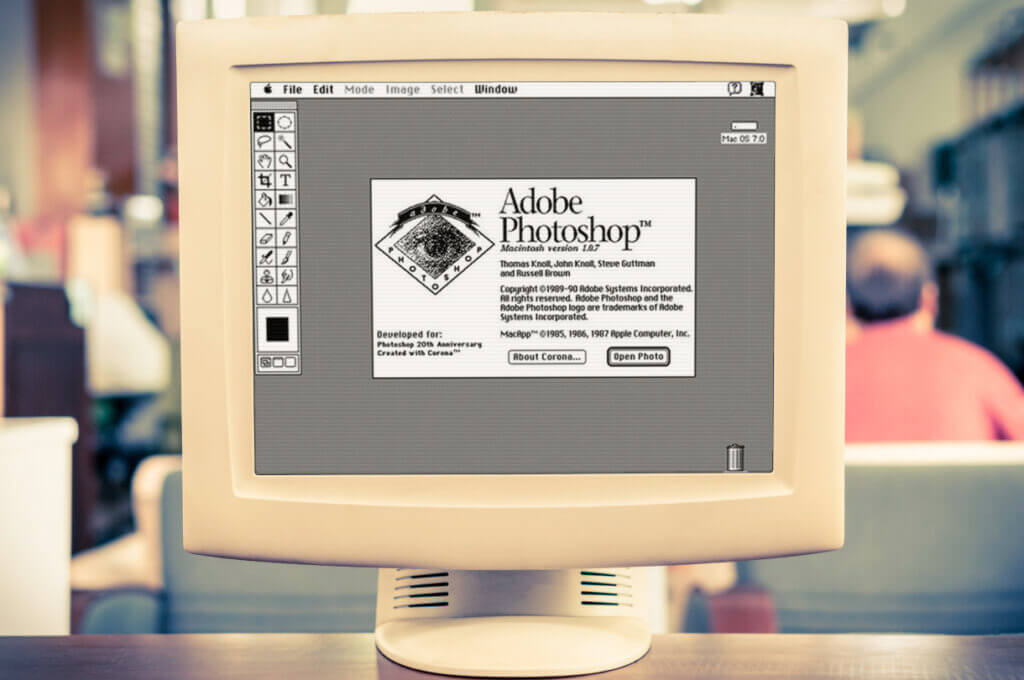
One of the greatest contributors to design trends In the 1990s was the significant advancements and wider availability of design, editing, and print technology, both hardware, and software. The Knoll Brothers published Photoshop 1.0, leading the way for digital editing software. Foundries began to digitize and distribute their font libraries via CD (some even on the World Wide Web!), creating even more options for designers. Computers, scanners, and printers reached a price point that allowed for much greater adoption.
Even though these new design instruments were becoming more widespread, in some cases artists continued to use the same design methods learned in their punk heyday (70s & 80s). As a result, trends that began life in the analog world began to see themselves recreated digitally. One example being the continued evolution of grunge style as digital methods became more readily available.
In the case of punk and grunge music scenes, zines and posters would often be collages, cut and pasted, splattered, painted over, duplicated, and run through however many Xerox passes were necessary to get the desired look. Made with an underground budget and less focused on traditional design elements, each of these steps chew into the artwork and give it that iconic grunge and grit. With the introduction of applications like Photoshop, each of these steps could be consolidated into one file as well as be shared and copied between artists.

Young adults today have grown up with computers and design software readily available. And their inspiration comes from the far-off land of the 1990s. This isn’t to paint a target on our younger generation. Much like the deluge of 1980s related media reappearing in recent years, from Stranger Things to a Blade Runner sequel, each cycle looks back about 20 years. Every generation is guilty of looking to the past for inspiration. There’s an allure and mystery to time periods before one’s own, particularly when they are not so far in the past that it’s impossible to imagine.
Art and design trends are artifacts of the past, with a distinct origin in time and occasion that brought them into existence, but that doesn’t mean they’re bound there. Trends of yesterday offer a lens through which to compare where we’ve come from to where we are now. What was considered good then? Is it still? Can we refine it? As time continues to march on we can look to these trends for nostalgic inspiration, and lessons learned.

Want to see what your brand can look like through the lens of past and present design trends? We take inspiration from every decade, combined with the latest design technology and your brand requirements to help you present your brand in new and relevant ways.
If it’s time for a makeover — our team can help to find the design solution that is right for you. Connect with our team today and check out some of our previous design work on our website.